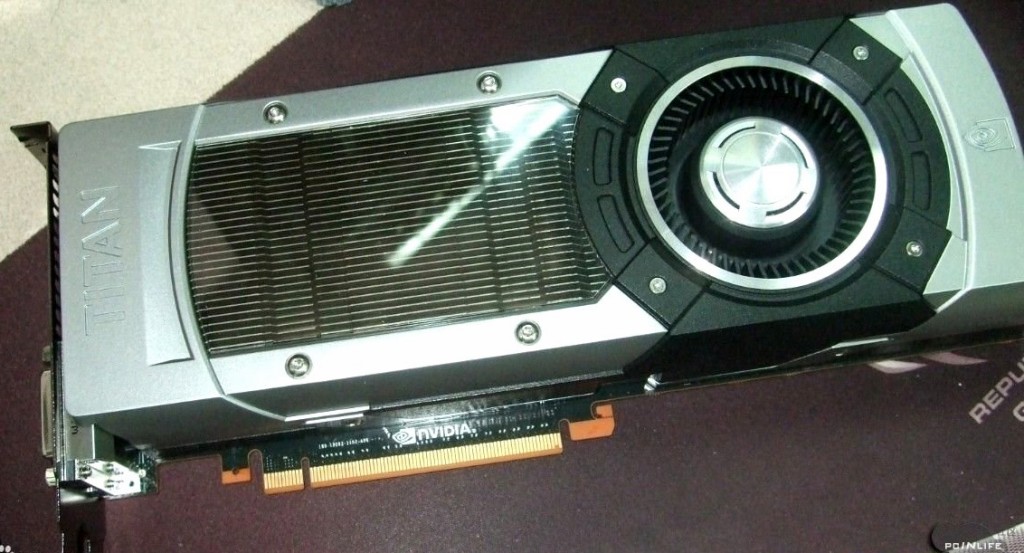
Quite why Nvidia is so keen to get the Titan X out of the door, particularly when it has zero competition at the top end of the market, is something of a mystery. That's a fierce release schedule by anyone's standards. The reveal of the Titan X follows the launch of the GTX 1080, the GTX 1070, and the GTX 1060, all of which were released over the past two months. It would also have given AMD a poke, especially since the company is planning to use HBM2 in its upcoming Vega architecture. But given this is Nvidia's flagship GPU, and it costs $1200, its inclusion would have been a pleasant surprise. Yes, HBM2 is still in its infancy (the P100 is the only GPU that uses it) and costs are high. It's also a wee bit disappointing not to see HBM2 being used and Nvidia opting for GDDR5X. Those hoping for a return of the stellar FP64 performance of the original Titan may be disappointed here, although Nvidia is pushing the card's 44 TOPs of INT8, a measurement for neural network inference performance. With previous Titans, Nvidia has simply taken its biggest chip and given it a prosumer makeover, but that doesn't seem to be the case here. Interestingly, while the new GTX Titan X features the same number of CUDA cores as Nvidia's Tesla P100 GPU-as used in deep learning and science applications-it is using a different chip. Externally, the Titan X uses the same multifaceted cooler of the GTX 1080, albeit now finished in black. Connectivity consists of DisplayPort 1.4, HDMI 2.0b, and dual-link DVI. Power is provided by one 8-pin and one 6-pin PCIe connector, with a max TDP of 250W, the same as the previous Titan X. The chip runs at a 1417MHz base clock and 1531MHz boost clock.īacking up GP102 is 12GB of GDDR5X memory running at an effective 10GHz and attached to a wide 382-bit bus, resulting in a 480GB/s of memory bandwidth, or a 50 percent increase over the GTX 1080. While Nvidia hasn't revealed the amount of Streaming Multiprocessors (SMs), texture units, and the like, if the company uses a similar architecture to the GP104 chip (as used in the GTX 1080 and GTX 1070), expect a 40 percent boost in SMs over the GTX 1080 to 28. The Titan X is powered by a new chip, GP102, which packs in 3584 CUDA cores. At first it'll only be available from the Nvidia website, but it will percolate down to other retailers soon after. The new Titan X launches on August 2 in the US and Europe. $1200-UK price TBC, but probably £1,100-buys you 11 teraflops of FP32 performance, which is a significant 24 percent jump over the 8.9 teraflops of the GTX 1080, and just over 60 percent higher than the 6.6 teraflops of the original Titan X.
Yes, Nvidia has taken its most expensive graphics card and given it a Pascal-architecture makeover.

Original storyįorget the GTX 1080: there's a new slab of graphics card hotness on the way from Nvidia, and its name is, er, the GTX Titan X. Americans can pick a new Titan X up for a relatively cheap $1,200, though it appears to be out of stock currently. At the time of writing, the Titan X is in stock in the UK.

The Titan X is currently only available through Nvidia's own online store, priced at £1,100 in the UK and €1,300 in the Eurozone. To put that in perspective, a Core i7-3960X Extreme Edition CPU has six cores, 2.3 billion transistors and 316 Gigaflops.Updated, August 5: The GTX Titan X, powered by the GP102 Pascal GPU, is now available to buy in the UK, Europe, and US. With the default clock speeds it puts the theoretical performance, with FP32 performance at 4.5 TFLOPS, FP64 performance at 1.3 TFLOPS, and 288.4GB/sec of memory bandwidth. It has six memory controllers, 1.5MB of L2 cache and is linked to 6GB of GDDR4 memory running on the 384-bit memory bus. The GK110 features 14 SMX units with 192 CUDA cores per unit, which adds up to 2688 CUDA cores. When it comes to the 6GB of GDDR5 memory, it is clocked at 6008MHz. The GeForce GTX Titan has a base clock of 837MHz and a boost clock of 876MHz. Down the road we’ll be doing some 5760×1080 testing, but for today we’ll be focusing at 2560×1600 gaming! We will be using our Dell 30-inch monitor for some 1920×10×1600 resolution gaming. If you are looking to spend $500 and above these are the cards you’ll be looking at, so they were included in testing. We’ve only had the card five days, but we will be comparing it to the ASUS ARES II (Radeon HD 7990), AMD Radeon HD 7970, NVIDIA GeForce GTX 690 and GeForce GTX 680.

NVIDIA sent over one GeForce GTX Titan video card for Legit Reviews to try out this week. Since we have already covered the key features of the GeForce GTX Titan video card, we invite you to go back and take a get a quick refresh on what the card is. We were asked by NVIDIA not to release our performance numbers until today. Two days ago, we were able to show you the features and images of the new NVIDIA GeForce GTX Titan 6GB video card.


 0 kommentar(er)
0 kommentar(er)
